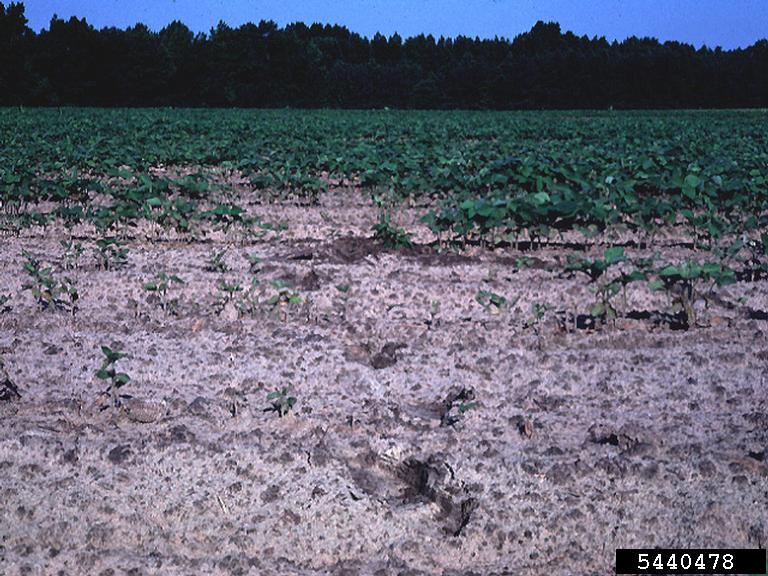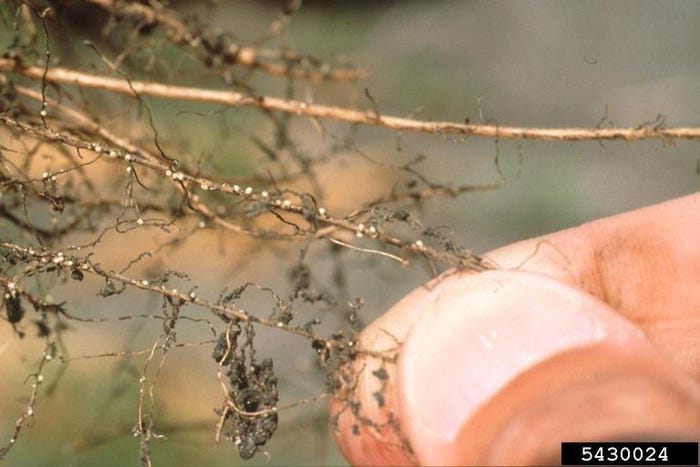July 6, 2018

Soybean cyst nematodes (SCN) are common in our fields. Typically, growers can expect to find females appearing on soybean plant roots about six weeks after planting. But this year the female nematodes started showing up in fields in early June, in some cases in as little as 26 days after planting.
“We tested some soil samples during the first week of June that already had egg counts ranging from 1100 to over 5000,” notes Dr. James Friedericks, Outreach & Education Director at AgSource Laboratories. “That’s much higher than we would expect to find at this early stage in the season.”

Extension staff at Iowa State University suggest that this early development of the nematode females is likely due to the unusually warm temperatures we had in May. The concern with this early appearance is that there will be more generations of nematodes this summer, resulting in higher populations and the potential for very high cyst and egg counts this fall.
Knowing the level of SCN pressure this year is important so that proper plans can be made to include more non-host and resistant crops in the rotation, and other control measures in the years to come if needed. When SCN counts in a field increase to over 2000 eggs/100cc soil, AgSource Laboratories recommends beginning a six-year rotation that includes a non-host crop and alternating soybean varieties with PI8878 and Peking SCN resistance. Sampling for nematodes is typically done in the fall, but if you are suspicious of already high infestations a sample collected in the summer will provide reliable information as well.
“Managing SCN can be difficult since no single tactic will control SCN,” says Friedericks, “But utilizing several management strategies can help minimize yield loss.”
Sampling Instructions
Samples can be taken anytime during the year, however it makes the most sense to sample fields for SCN in the fall, just prior to harvest.
To effectively check fields for presence of SCN, soil must be collected from no more than a 20 acre section, collecting a composite sample of ten to 20 soil cores.
Higher risk areas, where SCN may first appear, could include the following:
Areas near a field driveway
Along fence lines or where weed control is poor
In low areas that may have been flooded
Areas of the field where soil pH is above 7.0
Mix the soil cores very well and place in a tightly closed soil bag.
Keep the samples at room temperature or cooler and out of sunlight until they can be shipped to an AgSource Laboratories location.
The results will be shown as eggs or cysts per 100cc of soil. AgSource Laboratories offers both cyst and egg counts.
Additional information is available from AgSource Laboratories and Iowa State University Extension, https://www.plantpath.iastate.edu/scn/.
You May Also Like




